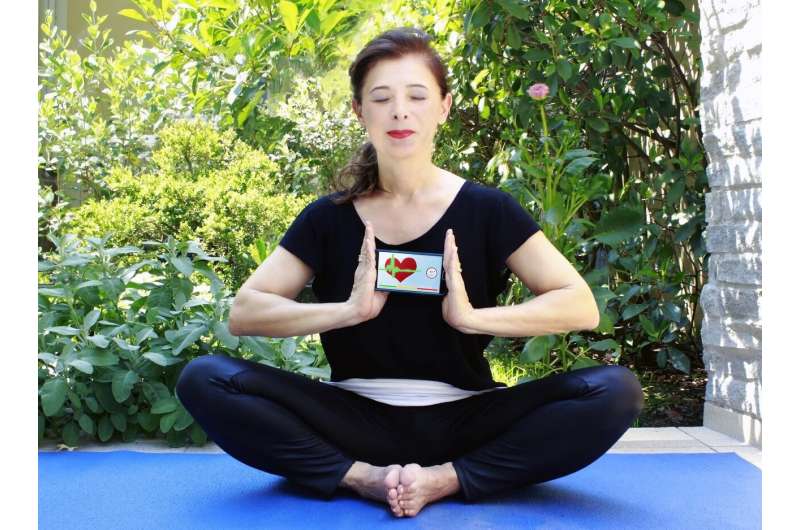Quality online resources for physical education teachers

Teachers from kindergarten through 12th grade across the U.S. are making the shift from teaching classes in person to teaching from a distance, which requires creating online assignments and activities to keep their students learning.
But what does this shift look like for physical education (P.E.) teachers?
Chad Killian, assistant professor in the College of Education & Human Development's Department of Kinesiology and Health, is working with University of Illinois doctoral students Shelby Ison and Shannon Pennington to create a series of free, online teaching modules that high school physical education teachers can use to connect with their students.
These modules include content videos, movement resources, ideas for assessment and support videos to help teachers navigate the transition to an online format.
"We envision teachers taking the content, sharing it with their students and helping them find activities that are meaningful for them," Killian said. "We want to support teachers' adoption of this and give them a chance to make it their own, so we're including a blank slide deck and encouraging them to add voiceovers so students will recognize their teachers' voices."
He and his colleagues are designing these teaching modules for a time when students in many communities are practicing social distancing, and they encourage P.E. teachers to be understanding and thoughtful when it comes to promoting healthy behaviors at home.
"What is the role of assessment? Do teachers need to hold students accountable at this time, when students are also being asked to do so much classwork at home?" Killian said. "We're pivoting from a structured, accountability standpoint to encouraging students to find enjoyable, meaningful physical activities to do with their families in order to combat sedentary behavior and really just manage and thrive during these precarious times."
Killian plans to continue conducting research that leads to designing online, evidence-based curriculum for physical education that benefits students, an area with very little research at present.
"It's been a journey for us," he said. "We really want to take a systematic approach to helping teachers and students. This project has been great in that it gives us a chance to help teachers and students in the immediate, while also providing key insight that will influence future research and design decisions."
To access the first two sets of modules Killian and his colleagues have designed, visit drive.google.com/drive/folders … R5krm3PwyJy_Dv-iycoN.
Considerations for Physical Education Teachers
P.E. teachers may be struggling to shift their teaching to an online format. Killian offers a few suggestions to those teachers making the transition:
- Think about how you're approaching your students. When inviting students to be physically active at home, Killian suggests teachers be intentional about how they connect with their students and understand that lessons won't look the same as they do when students are at school. "This isn't the school day—this isn't your 50-minute P.E. class where you're grading your students, but there can still be real meaning in being physically active at this time."
- Highlight how exercise can help students cope with stressful, uncertain times. P.E. teachers don't always teach the psychological benefits of physical activity, which include reduced levels of stress and improved mood and cognition, benefits that take on particular significance when faced with a global pandemic. "You might start thinking more clearly and find yourself in a better mood after exercising but might not be aware of it, and that has value for students," Killian said. "Teachers should be sharing that as part of their instruction during this time."
- Make your students' well-being the main priority. Instead of just sending out a few YouTube videos to watch, teachers should give thought to the resources they're providing their students. "Really think about what you're giving students," Killian said. "Ask yourself, "What about this can promote or will promote positive student outcomes? How might this help students manage and thrive during this time?'"
Promoting Physical Activity at Home
How can students and their families incorporate consistent physical activity into their days at home? Killian has three tips for keeping active in an era of social distancing:
- Make exercise a priority. "Many people talk about maintaining a regular schedule during this time, so schedule physical activity into that daily routine," Killian said.
- Do it together. Families don't have to spend this new, concentrated time together stuck inside. Killian recommends going outside if it's possible and finding ways to be active together.
- Find an activity that's enjoyable to you. Expectations for what exercise can and should look like can give people pause when it comes to physical activity. "A lot of people think exercise means you have to go for a run or do push-ups," Killian said. "But you can kick a ball around, mow the lawn or go for a walk. Find something that appeals to you."
More information: The first two sets of modules: drive.google.com/drive/folders … R5krm3PwyJy_Dv-iycoN.
Provided by Georgia State University





















